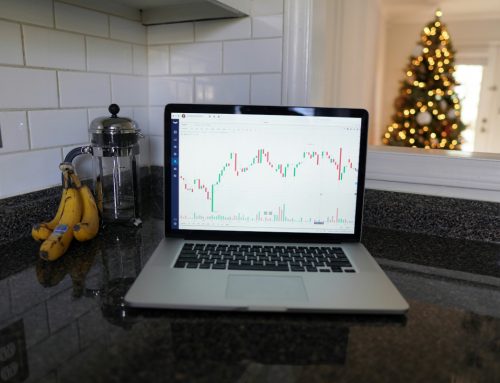In the ever-evolving world of swing trading, the quest for the next big opportunity can be as challenging as it is thrilling. Amidst a sea of stocks, identifying those poised for significant moves often feels like searching for a needle in a haystack.
Enter the game-changing utility of a swing trade scanner.
A swing trading screener sifts through endless market data to spotlight high-potential stocks, transforming a daunting task into a manageable one. In essence, the right scanner can save you time and stress while helping you win more trades. That’s why we’re going to teach you how to scan stocks for swing trading.
But, we’ll also introduce you to VectorVest’s proprietary screeners, tailored to unearth everything from dynamic momentum stocks to reliable retirement picks.
We’ve done the hard work for you so you can simply pull up the screener and pick the best opportunity for your unique swing trading strategy. Our stock analysis software doesn’t just tell you what to buy, though. It tells you when to buy it and when to sell it.
Read on below to discover how to make scanning for stocks straightforward and effective with VectorVest!
What is a Swing Trading Scanner?
Decisions are made in the blink of an eye in the fast-paced world of swing trading. A swing trading scanner ensures you’re always presented with the best opportunities on any given trading day.
At its core, a swing trade scanner is a sophisticated software tool designed to sift through vast arrays of stock market data to identify potential trading opportunities that align with specific swing trading strategies.
Think of it as a high-powered filter that sorts through thousands of stocks to pinpoint those that meet predefined criteria. These criteria could range from technical indicators, such as moving averages and RSI levels, to fundamental factors like earnings growth or market capitalization.
Let’s get into why you’d want to take the time to learn how to scan stocks for swing trading below before dissecting the key components.
Why Set Up a Swing Trading Scanner?
One of the standout features of a swing trading screener is its customizability. Traders can set parameters that align with their specific trading styles and goals.
Whether focusing on short-term momentum, price volatility, or long-term stability, the scanner can be tailored to highlight stocks that best fit the trader’s strategy.
But, perhaps the biggest advantage of using these is the time savings you’ll enjoy. A swing trading stock screener automates the process of looking for stocks, efficiently analyzing the market comprehensively and swiftly. It ensures no viable opportunity is missed.
Manually scanning the stock market for potential trades is not only time-consuming but also prone to oversight. There’s nothing worse than losing a trade because your analysis fell short.
A scanner is governed by specific algorithms that eliminate these errors and provide more accurate and objective results. This precision is crucial in swing trading, where decisions need to be based on reliable data.
Finally, a swing trade scanner eliminates emotion from your decision-making. You can reduce emotional biases that often lead to poor trading decisions by relying on data-driven results from a scanner. This objectivity is key to maintaining discipline in your trading strategy.
Key Components of a Swing Trading Screener
While you can screen stock screeners for any sort of trading strategy and configure them in a seemingly endless number of ways, all screeners have a few key components:
- Technical Analysis Integration: These scanners often integrate various technical analysis tools and stock market indicators, providing insights based on historical price movements, trends, and patterns.
- Real-Time Data Access: Access to real-time market data is crucial for swing traders. A good scanner processes live data, delivering up-to-date information essential for making timely and informed trading decisions.
- Alerts and Notifications: Many scanners come equipped with alert features. Traders can receive notifications when a stock meets their criteria, enabling quick action, which is vital in swing trading where market conditions can change rapidly. Learn more about what separates the best swing trading alerts apart from the rest in our blog.
- User-Friendly Interface: Despite the complex algorithms that power them, the best scanners are designed with user-friendly interfaces, making them accessible to both novice and experienced traders. This is one of the most important criteria when looking for the best platform for swing trading.
In summary, setting up a swing trading scanner is an investment in efficiency, accuracy, and adaptability. It’s an essential tool that complements the trader’s skills, offering a more systematic approach to identifying trading opportunities. So, let’s get into how to scan stocks for swing trading below!
How to Scan Stocks for Swing Trading: Tips on Screening Stocks for Swing Trading
You know how much your swing trading stock selection process can be enhanced through scanners. So, how do you go about screening stocks for swing trading?
We’ll highlight the essential criteria for selecting swing trading stocks in general followed by tips on how to set up a stock screener for swing trading. Then, we’ll show you a simpler way to scan for stocks without having to set up your own stock screener!
Essential Criteria for Selecting Stocks in Swing Trading
We have resources on how to analyze stocks or how to pick a stock for swing trading in general, but we’ll cover the basics of what makes a good opportunity below. You’ll use this as the criteria for screening stocks for swing trading in a moment:
- Volatility and Liquidity: Look for stocks with sufficient volatility, which means they have enough price movement to offer profit opportunities, but not so much that they become excessively risky. Liquidity is also vital to ensure you can enter and exit positions easily.
- Trend Patterns: Stocks that show clear uptrends or downtrends can be ideal candidates for swing trading. Utilize trend indicators such as moving averages to identify these patterns. You can learn about other swing trading patterns in our blog.
- Trading Volume: An increase in trading volume can validate the strength of a trend or a price movement, making it a critical factor in stock selection.
Setting Up the Swing Trade Screener
Now comes the fun part in our guide – how to set up a stock screener for swing trading. This is something you’ll do in your analysis platform, whether it’s the VectorVest system itself or some other platform like ThinkorSwim. We’ll highlight some swing trader scanner settings you can use below.
Momentum Swing Screener
This screener is ideal for identifying stocks in a strong uptrend without being overbought. It’s particularly useful in a bullish market environment or when looking for stocks that are starting to trend after a period of consolidation.
- RSI Settings: Set the Relative Strength Index (RSI) parameters to identify stocks where the RSI is between 30 and 70. This range helps avoid stocks in extreme overbought (>70) or oversold (<30) conditions, which might be due for a reversal. This is one of the best swing trading indicators you can use in a swing trade scanner.
- Moving Average Crossover: Look for stocks where the shorter-term 50-day moving average crosses above the longer-term 200-day moving average. This crossover is a bullish signal indicating that the stock is gaining upward momentum.
- Volume Analysis: Incorporate a filter for above-average trading volume to confirm the momentum. Increasing volume along with the moving average crossover suggests stronger conviction in the price movement.
- Price Trend: You may also add a filter to ensure the stock price is above the 50-day moving average, reinforcing the momentum trend.
Reversal Opportunity Screener
This screener is designed to spot stocks that are potentially bottoming out and ready to reverse course. It is most effective in range-bound or volatile markets where stocks frequently oscillate between overbought and oversold conditions.
- RSI Rebound: Focus on stocks where the RSI has recently dipped below 30 and is starting to curve upwards, indicating a potential reversal from oversold conditions.
- Support Level Confirmation: Combine this with price analysis to ensure the stock is near a historical support level. This could be a previous low point or a significant moving average like the 100-day or 200-day moving average. The specific swing trading time frames are up to you.
- Candlestick Patterns: Look for bullish reversal candlestick patterns like ‘Hammer’ or ‘Engulfing’ at the support level for additional confirmation. Learn more about the best candlestick patterns for swing trading in our blog.
- Volume Spike: A sudden increase in trading volume can validate the reversal, indicating renewed interest in the stock.
Breakout Potential Screener
This screener targets stocks that are poised to make significant moves out of a period of consolidation. It is particularly useful in a trending market or when a sector starts showing signs of heightened activity.
- Consolidation Patterns: Identify stocks that have been trading in a consolidation pattern, such as a range, triangle, or pennant, for a significant period.
- Approaching Bollinger Bands: Focus on stocks where the price is nearing the upper Bollinger Band. The Bollinger Bands should start to expand, indicating an increase in volatility – a precursor to potential breakouts.
- Breakout Confirmation: Monitor for a breakout where the stock price closes above the upper Bollinger Band with a significant increase in volume.
- Relative Strength: Comparing the stock’s performance against its sector or index can provide additional insight. A stock breaking out in a strong sector may have higher chances of sustained momentum.
Executing Trades After Uncovering Opportunities
So you know how to scan stocks for swing trading. But what do you do when your swing trade scanner pulls an opportunity to your desktop or mobile device? How do you validate the opportunity and execute the trade?
Before jumping into a trade, conduct a deeper analysis of the stock. Examine its recent news, earnings reports, sector performance, and market sentiment indicators. This helps in understanding the context behind the screener’s signal.
You can learn more about how to do fundamental analysis of stocks in our blog, or better yet, how to combine fundamental and technical analysis.
Assess the potential risk and reward of the trade. Estimate the potential upside and compare it with the downside risk. A favorable risk-reward ratio, such as 1:2 or higher, is often sought after in swing trading.
Then, it’s time to actually set up the trade. Here are a few important considerations in doing so:
- Entry Points: Decide on your entry point based on the stock’s current price action. This could be a breakout point, a bounce from a support level, or the crossing of a moving average.
- Stop-Loss Orders: Always set a stop-loss order to cut losses when necessary. The stop-loss can be placed below a recent low for long positions or above a recent high for short positions. This protects against adverse market movements.
- Profit Targets: Set clear profit targets based on key resistance levels, previous highs, or specific percentage gains. Having predefined exit points helps in taking emotion out of the decision-making process.
- Timing: The timing of your entry can significantly impact the trade’s outcome. Look for high-probability entry points where multiple factors align, such as high volume, favorable market conditions, and technical indicators. We have a guide on the best time of the day to buy stocks along with tips on when to buy stocks for beginners in general.
- Position Sizing: Determine the size of your position based on your overall portfolio and risk management rules. Avoid overexposure to a single trade to manage risk effectively.
- Monitoring the Trade: Once you have entered a trade, monitor it closely. Swing trades typically last from a few days to a few weeks, so it’s essential to stay updated on any market changes that could affect your position. Our guide on when to sell stocks for profit is a great resource to help you manage your trade.
You can learn more about buying and selling stocks in our blog. We have resources like how to buy the dip, should I buy stocks when they are low or high, can you sell stock after hours, market timing strategies, and more. At this point, though, it’s time to simplify your swing trade scanner setup with VectorVest!
Find Winning Opportunities on Autopilot With Our Swing Trade Scanner!
VectorVest is a stock advisory that has outperformed the S&P 500 index by 10x over the past 20 years and counting. It uses a proprietary stock rating system that saves you time and stress while helping you win more trades with less work.
Instead of relying on complex fundamental analysis and technical analysis, you can use 3 simple ratings that give you all the insights you need: relative value (RV), relative safety (RS), and relative timing (RT). Each of these sits on a scale of 0.00-2.00 with 1.00 being the average, allowing for quick and easy interpretation.
But, it gets even better. You’re given a clear buy, sell, or hold recommendation for any given stock at any given time based on its overall VST rating. This ease of use and consistent success rate is why VectorVest is considered the best stock analysis app.
As for how to screen stocks for swing trading with VectorVest, you gain access to an array of proprietary screeners we’ve already built. These bring the best opportunities on any given day right to your screen. Here are some of our most popular screeners:
- Hot Stocks
- High Momentum Stocks
- Overall Top Rated Stocks
- Safest Buy-Rated Stocks
- Top Dividend Stocks
Or, you can filter your screening efforts by industries – such as steel, building, ETFs, retail, you name it, we’ve got it. There are many other features screens and premium watchlists available on the VectorVest platform as well.
Whether you’re searching for the best beginner stocks to buy, the best stocks to day trade, or you want to learn how to find options to trade, VectorVest can help. Learn more about what separates our swing trading tools from the rest with a free stock analysis today!
Wrapping Up Our Guide on How to Screen Stocks for Swing Trading
In wrapping up our guide on screening stocks for swing trading, we’ve explored the critical role of swing trade scanners in identifying lucrative opportunities, from momentum plays to breakout potentials.
We’ve outlined strategies for how to scan stocks for swing trading and the importance of a disciplined approach in executing trades. We hope you are able to use these tips to save time and stress while maximizing profits in your trading strategy!
Learn more about swing trading for beginners in our blog. We have related articles on topics like the realistic swing trading returns you can expect when swing trading for a living, positional trading vs swing trading, scalping vs swing trading, timing the market vs time in the market, what affects stock price, pros and cons of swing trading, paper trading, and more.
As you embark on this journey, remember that VectorVest is here to simplify the process. Our platform offers advanced screening tools and analytics to make informed decisions with ease. Embrace the power of VectorVest in your swing trading strategy and invest in your trading success today!








Leave A Comment